Abstract
1. The effects of primary tissue hypoxia induced by the inhalation of small concentrations of carbon monoxide in air on the distribution of blood flow in the portal, renal, muscle and skin beds have been studied in normal unanaesthetized rabbits, in animals without functioning autonomic effectors (`de-efferented' rabbits) and in animals with section of the carotid sinus and aortic nerves (`de-afferented' rabbits).
2. The pattern of blood flow distribution during CO hypoxia was similar in `de-efferented' and `de-afferented' animals, suggesting that the effects in the latter were determined by local mechanisms. The susceptibility of the various beds to the local dilator effects of CO hypoxia was markedly different, the greatest dilator effects being observed in the portal bed, followed by skin, kidney, and muscle. The pattern is somewhat different from that observed in arterial hypoxia.
3. In this type of hypoxia the arterial baroreceptors are probably the main afferent source of reflex activity. In normal animals reflex constrictor effects affect the portal and renal beds most, `moderating' the local dilator effects of hypoxia in these beds. In muscle there is vasodilatation, probably the result of adrenaline secretion, but the response in skin is largely determined by the local effects of hypoxia. The total orthosympathetic activity evoked in this type of hypoxia appears to be less than in severe arterial hypoxia.
Full text
PDF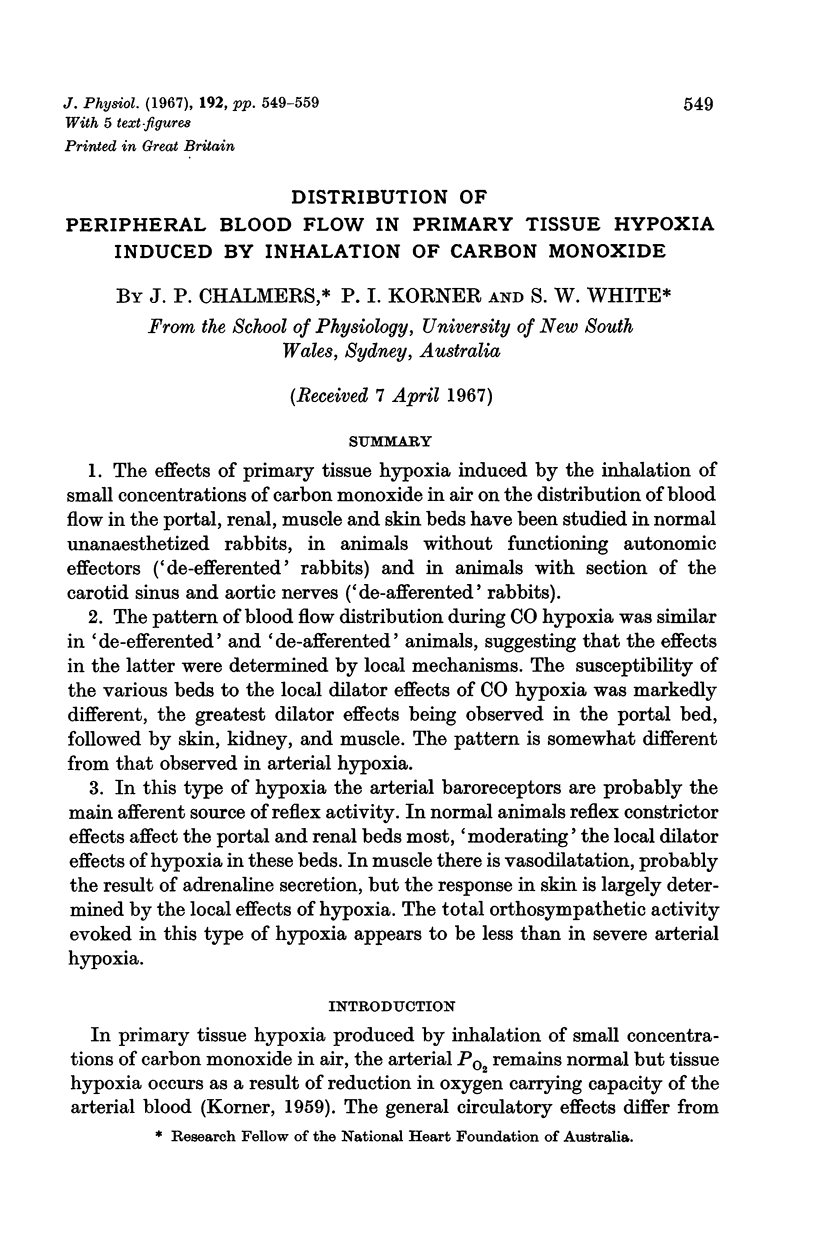
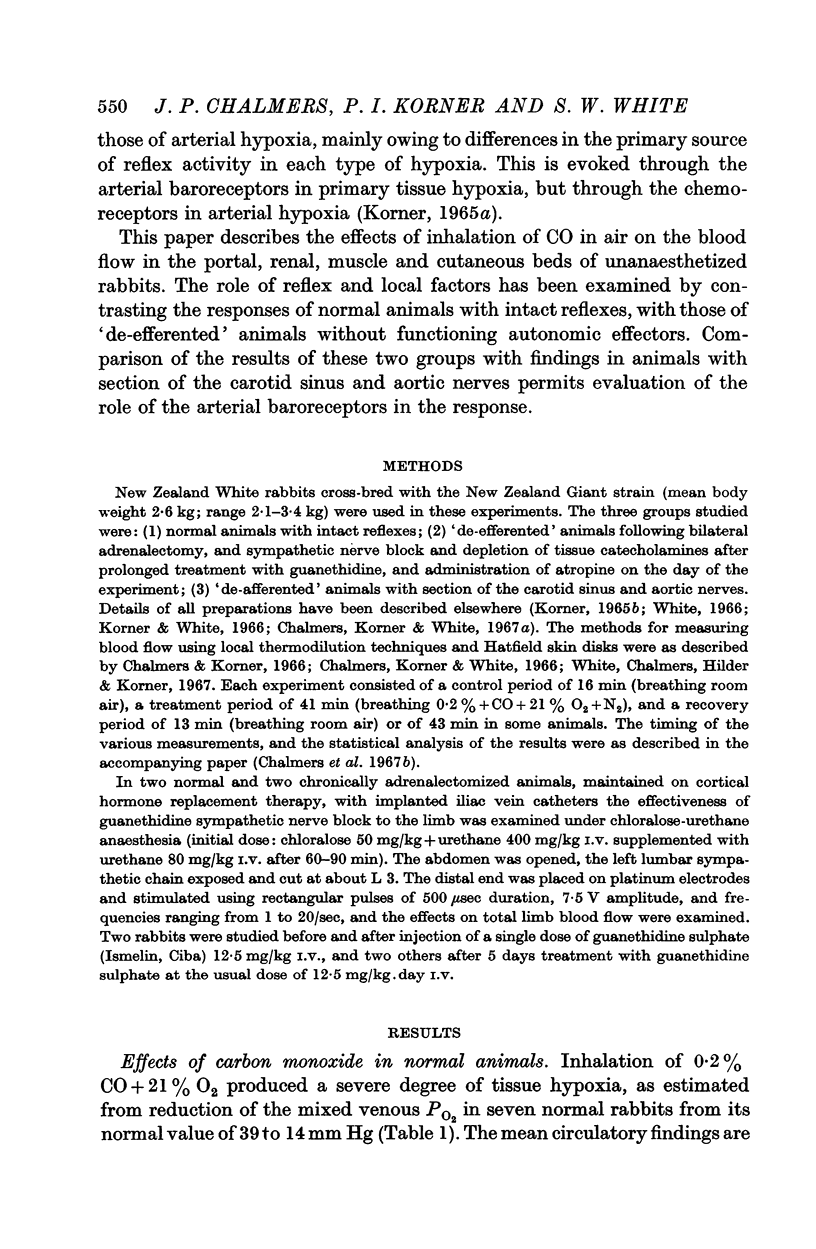
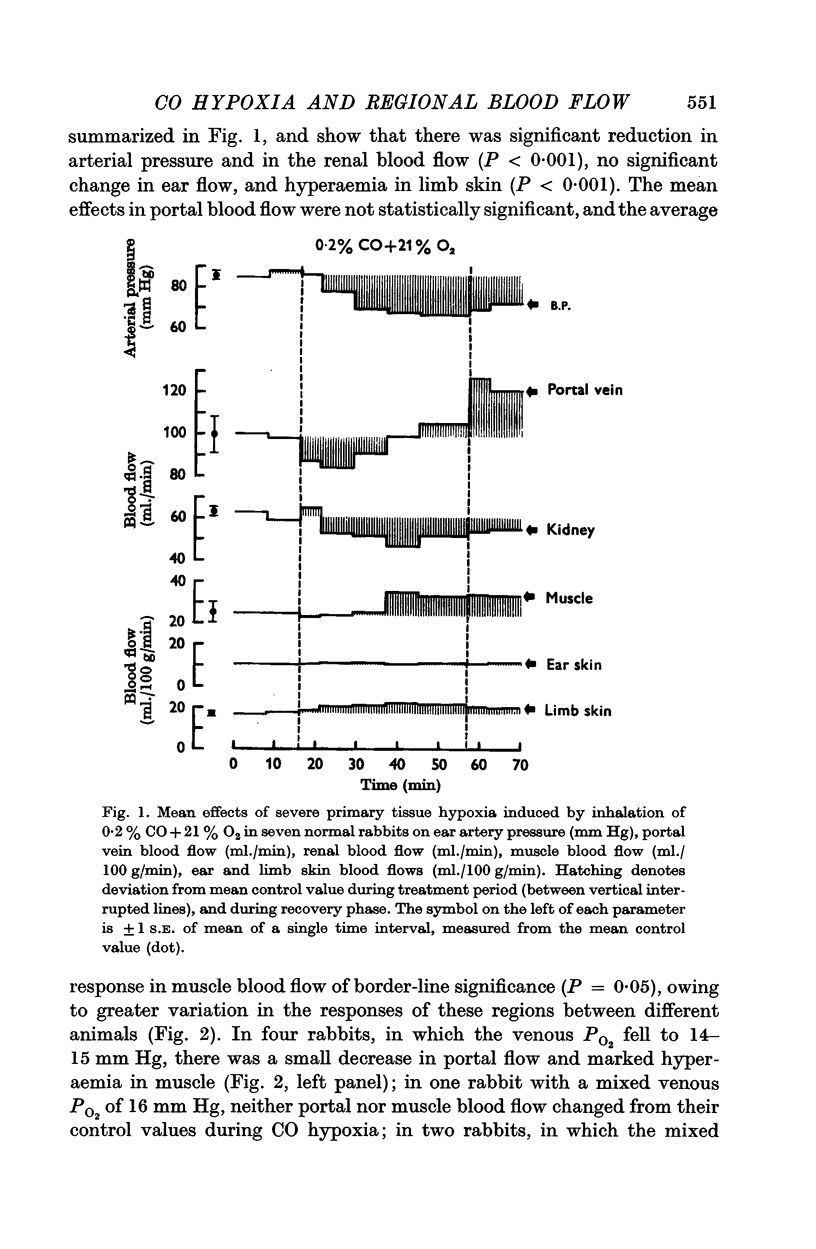
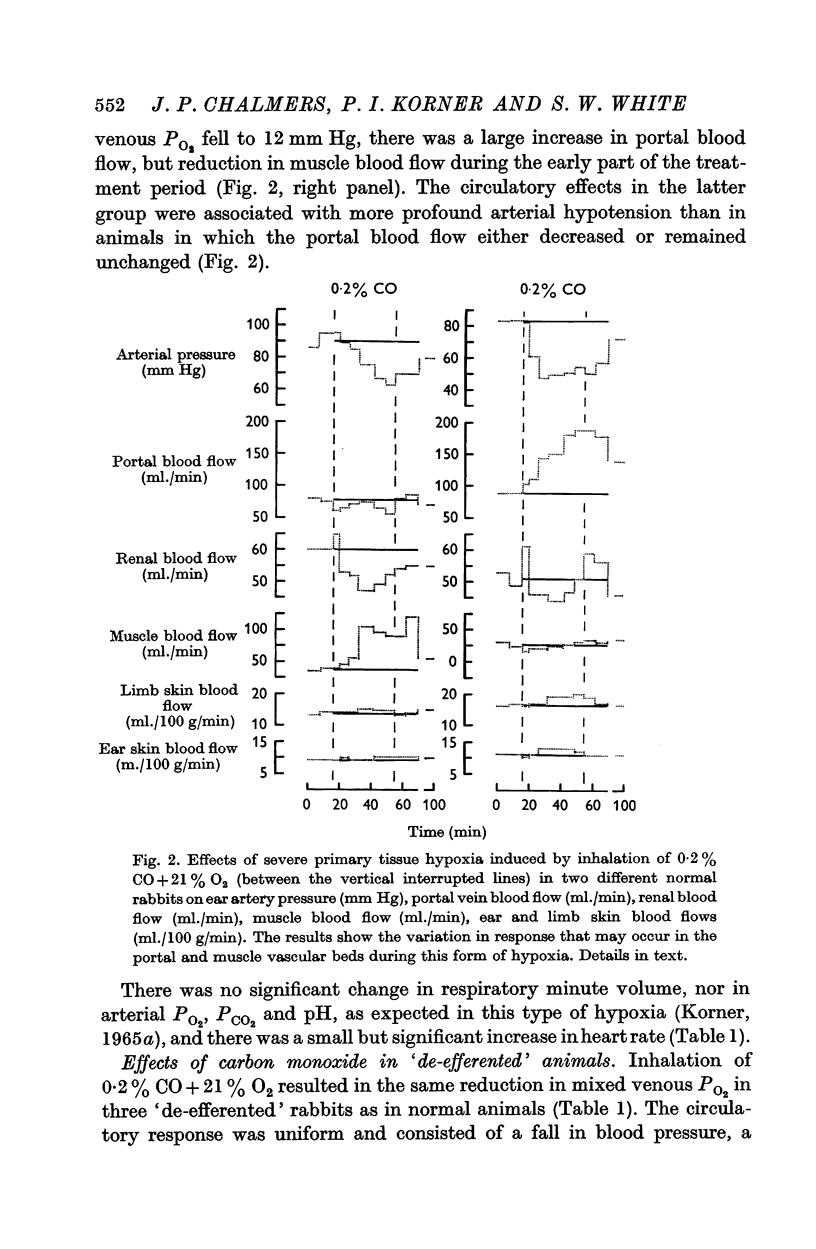
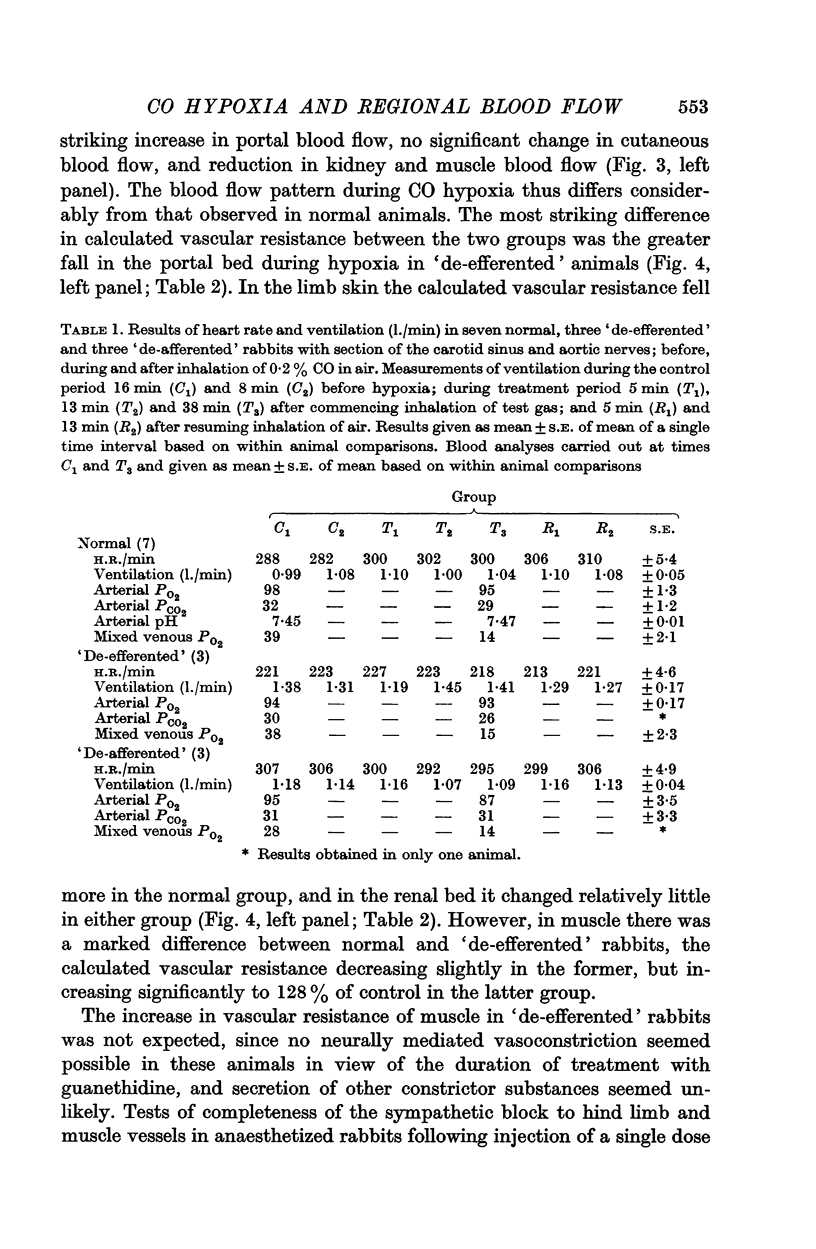
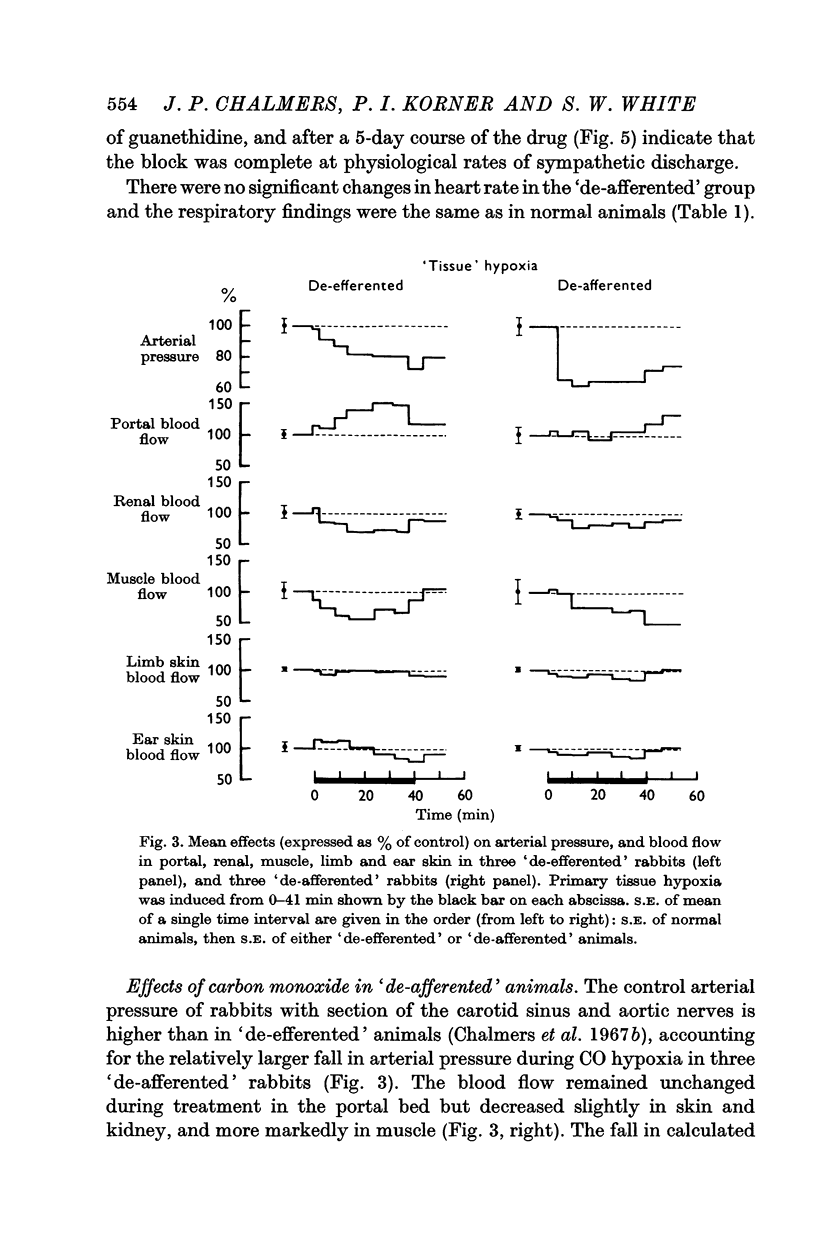
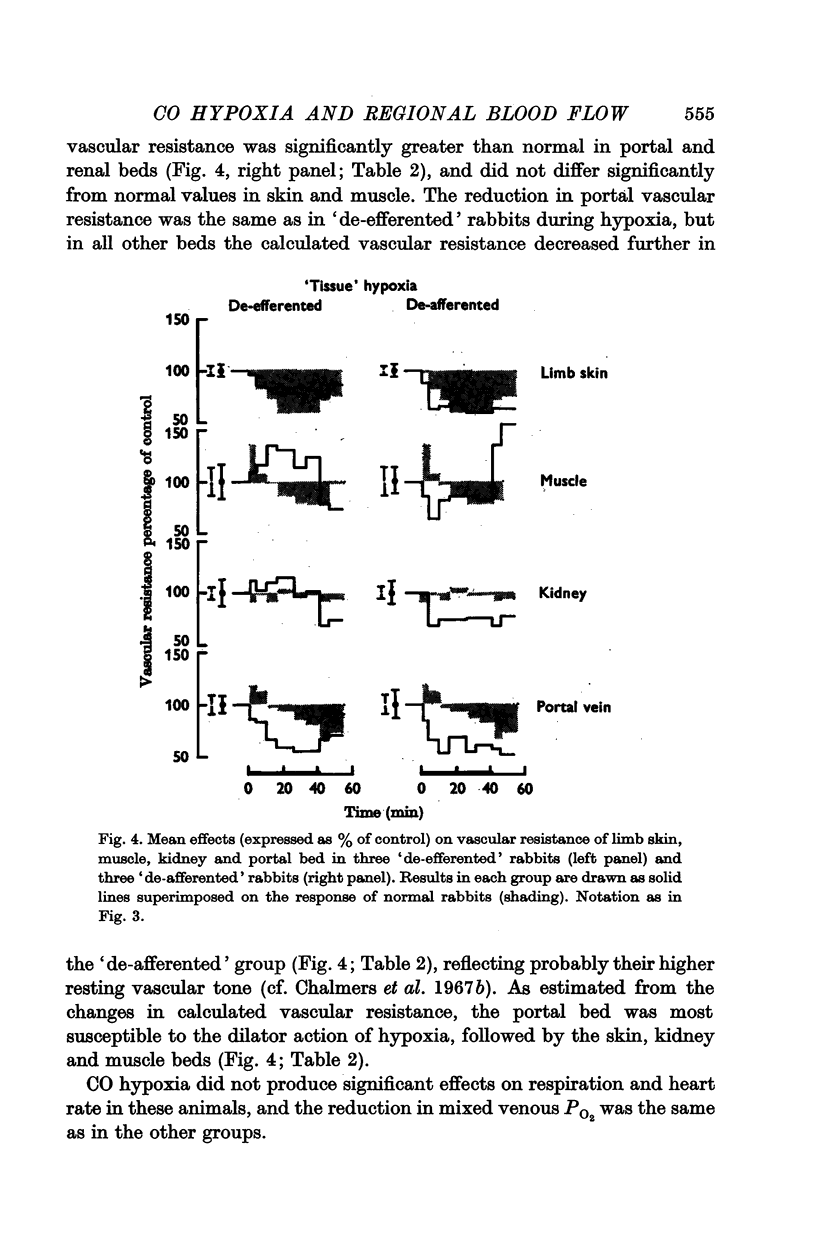
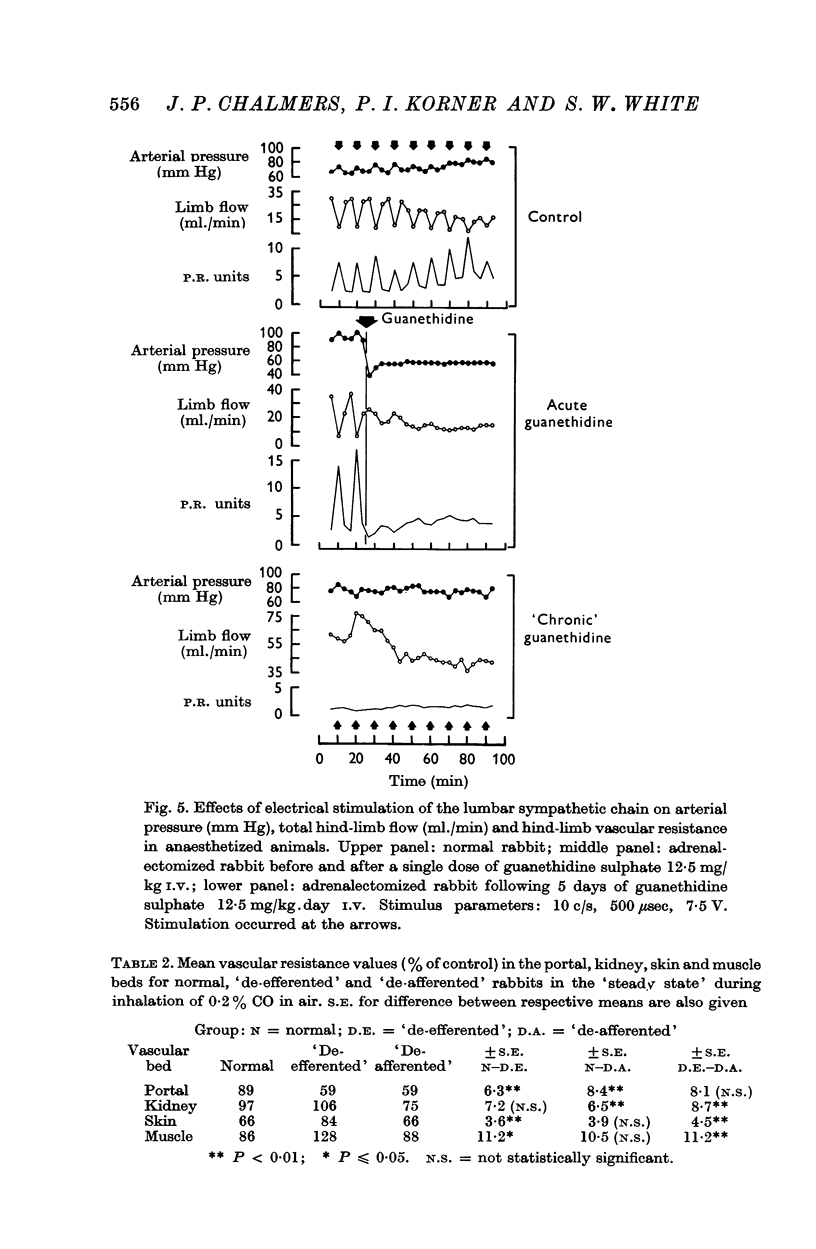
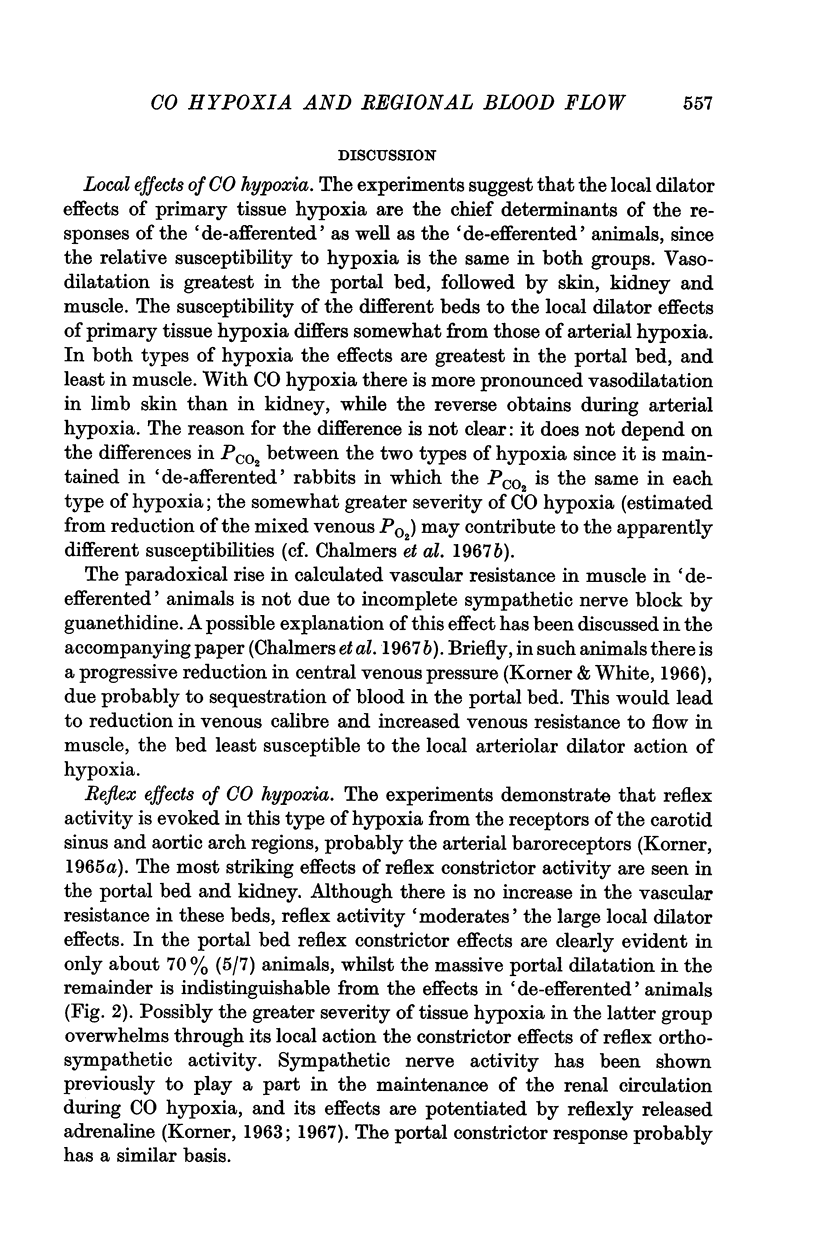
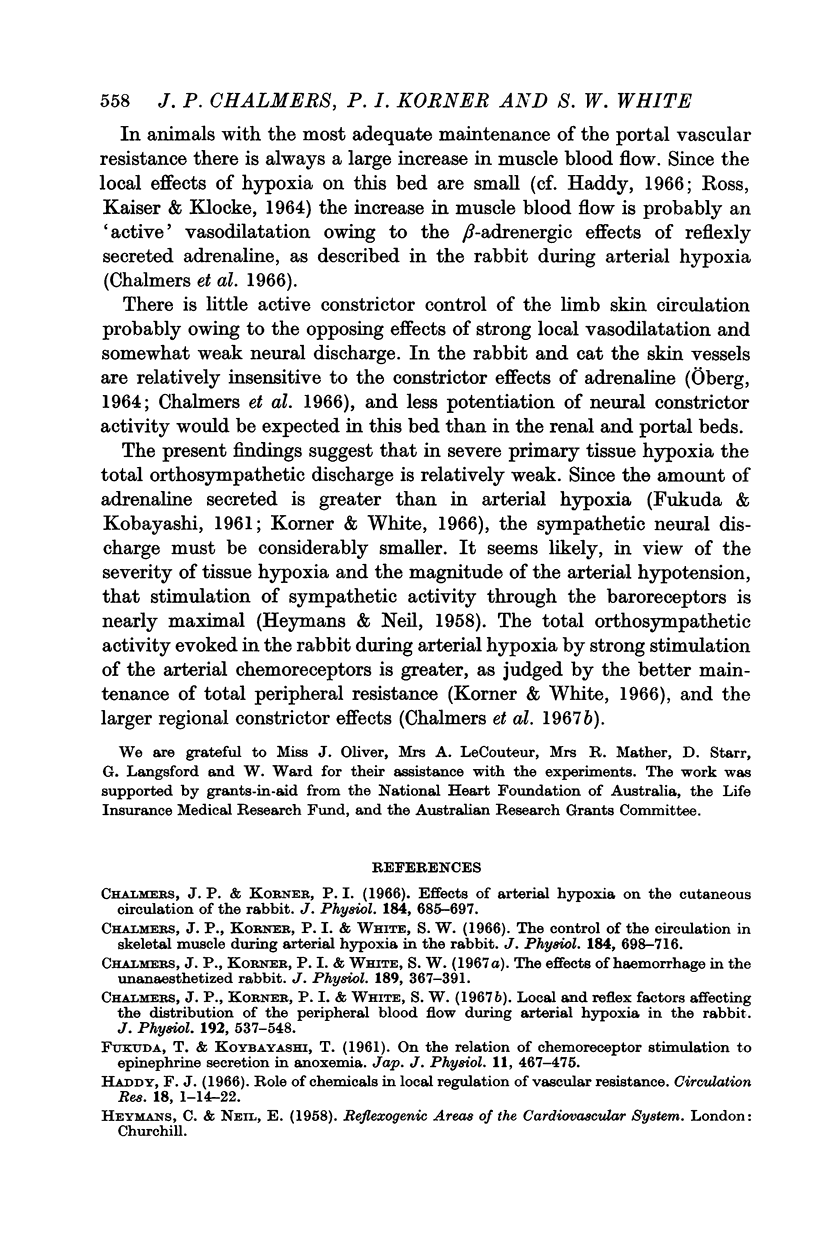
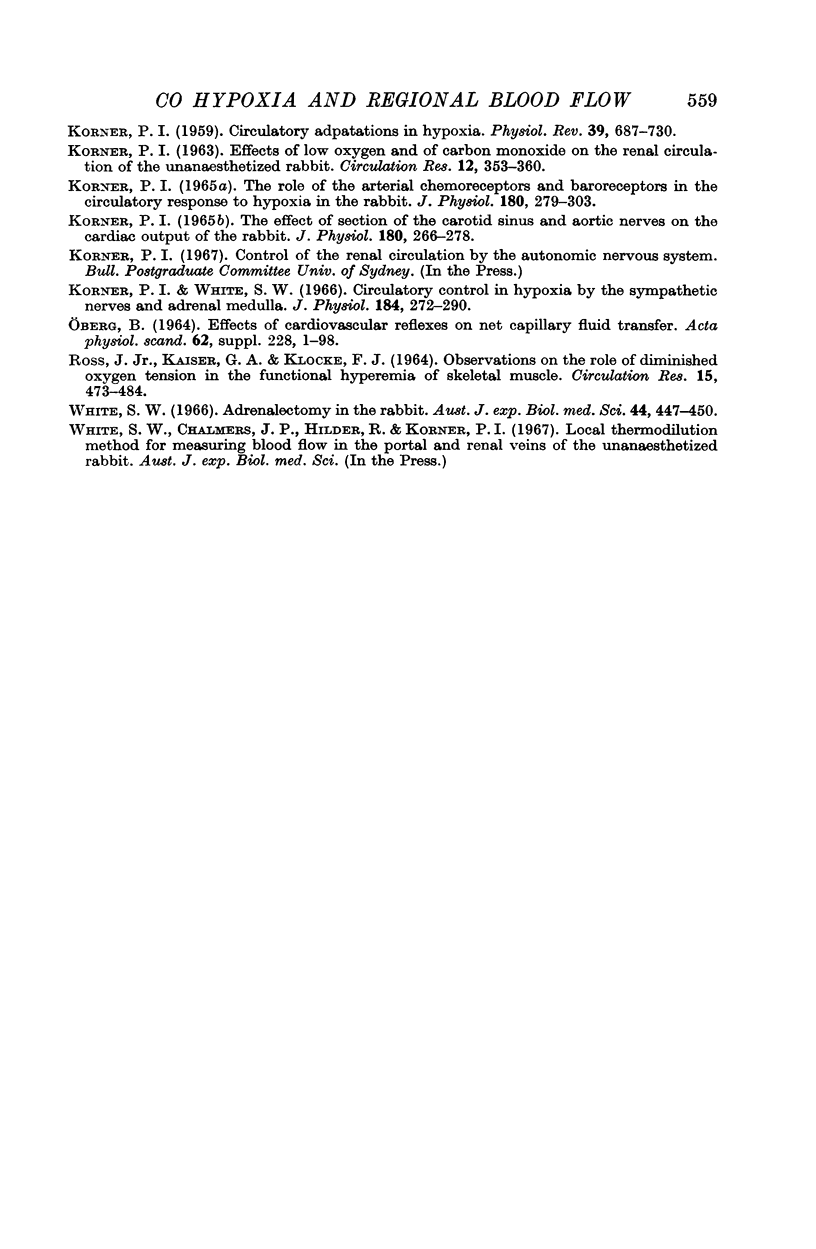
Selected References
These references are in PubMed. This may not be the complete list of references from this article.
- Chalmers J. P., Korner P. I. Effects of arterial hypoxia on the cutaneous circulation of the rabbit. J Physiol. 1966 Jun;184(3):685–697. doi: 10.1113/jphysiol.1966.sp007941. [DOI] [PMC free article] [PubMed] [Google Scholar]
- Chalmers J. P., Korner P. I., White S. W. Local and reflex factors affecting the distribution of the peripheral blood flow during arterial hypoxia in the rabbit. J Physiol. 1967 Sep;192(2):537–548. doi: 10.1113/jphysiol.1967.sp008315. [DOI] [PMC free article] [PubMed] [Google Scholar]
- Chalmers J. P., Korner P. I., White S. W. The control of the circulation in skeletal muscle during arterial hypoxia in the rabbit. J Physiol. 1966 Jun;184(3):698–716. doi: 10.1113/jphysiol.1966.sp007942. [DOI] [PMC free article] [PubMed] [Google Scholar]
- Chalmers J. P., Korner P. I., White S. W. The effects of haemorrhage in the unanaesthetized rabbit. J Physiol. 1967 Apr;189(3):367–391. doi: 10.1113/jphysiol.1967.sp008174. [DOI] [PMC free article] [PubMed] [Google Scholar]
- FUKUDA T., KORAYASHI T. On the relation of chemoreceptor stimulation to epinephrine secretion in anoxemia. Jpn J Physiol. 1961 Oct 15;11:467–475. doi: 10.2170/jjphysiol.11.467. [DOI] [PubMed] [Google Scholar]
- KORNER P. I. Circulatory adaptations in hypoxia. Physiol Rev. 1959 Oct;39:687–730. doi: 10.1152/physrev.1959.39.4.687. [DOI] [PubMed] [Google Scholar]
- KORNER P. I. Renal blood flow, glomerular filtration rate, renal PAH extraction ratio, and the role of the renal vasomotor nerves in the unanesthetized rabbit. Circ Res. 1963 Apr;12:353–360. doi: 10.1161/01.res.12.4.353. [DOI] [PubMed] [Google Scholar]
- Korner P. I. The effect of section of the carotid sinus and aortic nerves on the cardiac output of the rabbit. J Physiol. 1965 Sep;180(2):266–278. doi: 10.1113/jphysiol.1965.sp007702. [DOI] [PMC free article] [PubMed] [Google Scholar]
- Korner P. I. The role of the arterial chemoreceptors and baroreceptors in the circulatory response to hypoxia of the rabbit. J Physiol. 1965 Sep;180(2):279–303. doi: 10.1113/jphysiol.1965.sp007703. [DOI] [PMC free article] [PubMed] [Google Scholar]
- Korner P. I., White S. W. Circulatory control in hypoxia by the sympathetic nerves and adrenal medulla. J Physiol. 1966 May;184(2):272–290. doi: 10.1113/jphysiol.1966.sp007915. [DOI] [PMC free article] [PubMed] [Google Scholar]
- ROSS J., Jr, KAISER G. A., KLOCKE F. J. OBSERVATIONS ON THE ROLE OF DIMINISHED OXYGEN TENSION IN THE FUNCTIONAL HYPEREMIA OF SKELETAL MUSCLE. Circ Res. 1964 Dec;15:473–484. doi: 10.1161/01.res.15.6.473. [DOI] [PubMed] [Google Scholar]
- White S. W. Adrenalectomy in the rabbit. Aust J Exp Biol Med Sci. 1966 Aug;44(4):447–449. doi: 10.1038/icb.1966.41. [DOI] [PubMed] [Google Scholar]


